Citizen Science Projects in Slovakia
Slovakia’s projects that use citizen science methods are mostly related to nature observation and environmental protection. However, they do not use the term citizen science because the word was unknown when the older projects started. There are citizen science projects in biology, environmental science, meteorology, astronomy, and sociology in Slovakia.

The project measures the air quality (the concentration of nitrogen oxides NOx produced mainly by transportation) in cooperation with the primary school pupils and students of 1st-4th grades of eight-year grammar schools. It is part of the LIFE IP SK–Air Quality Improvement project. Pupils and students, assisted by teachers and Air Quality Managers (AQMs), will install passive air samplers (tubes) and check them regularly to see if they were not damaged or stolen. Furthermore, selected classes will monitor weather development and note possible fluctuations and changes in their worksheets. In addition, students and teachers can find out if there is an air quality monitoring station near their school (via the dnesdycham.sk website) and continually monitor the development of air quality. Or they can use a mobile application (Dnes Dýcham/I breathe today) to monitor air quality directly from their mobile phones. After finishing the measuring, the AQMs will come to schools to collect the tubes and then send them for lab analysis to a specialised laboratory in the Netherlands. The AQMs will inform schools about the results of the measurements in an agreed timeframe. Subsequently, the students, assisted by the AQMs, will present the measurement results to their schoolmates and school management and then to the higher regional body and its management, representatives of municipalities, and local MPs.
More information at: Dnesdycham.sk
Video: Let`s Start with Citizen Science (Bocian/White Stork)
The Eco-educational Program Bocian/White Stork (RNDr. Miroslav Fulín, CSc; the School of Nature Protection in Varín). Since 1976, M. Fulín has been developing a network of voluntary observers who report the presence and nesting of white storks in villages all over Slovakia. Thanks to the project database, the population trends of this species are known, and the eco-educational dimension of the project in cooperation with schools, museums, and the State Nature Conservancy of the Slovak Republic helps to spread awareness and implement measures to protect storks.
“I don’t use the term citizen science, but now, after you contacted me, I accept that it captures the essence. When we involve lay people in research, we can achieve that they will gradually become specialists able to compete or cooperate with a professional, an expert in the given field.”
“Every year, during the scientific research of birds at the Drienovec Ornithological Centre, the ringers welcome participation and help of young people, some of whom, although not zoologists, have now become equal ringers – ornithologists.”
You can find more information at: Škola ochrany prírody Varín a Bociany.
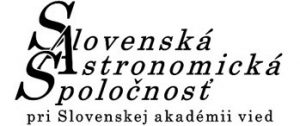
Video: Let`s Start with Citizen Science (Globe at Night)
Globe at Night (RNDr. Jaroslav Merc): the Slovak Astronomical Society at the Slovak Academy of Sciences. The project is an international scientific campaign to raise public awareness of the impact of light pollution by inviting citizen scientists to measure & submit their night sky brightness observations. The project involves people from 180 countries around the world. In Slovakia, the project runs under the Slovak Astronomical Society at the Slovak Academy of Sciences.
You can find more information at: Facebook Globe at Night.

A project investigates cowslip primrose (primula veris) flowers and their relation to the environment. The project has spread from the Estonian University of Tartu to many European countries and is still looking for new partners. The general public, students, teachers, professional botanists, or people from NGOs focused on environmental protection can join the project. It is enough to find blooming primrose in their natural environment and peek inside them. They have two types of flowers: stamens are visible in one kind and pistils in the other type. The aim is to count how many of which kinds of flowers there are at a given location (their relative proportions can tell scientists more about how primroses are doing there).
You can find a form and more information in Slovak at the project’s website.
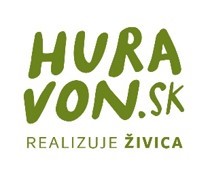
Video – Let`s Start with Citizen Science (Hurá von s Pl@ntNetom – Živica)
The Centre of environmental and ethical education, Živica, (Ing. František Cimerman) has created an online course for teachers, “Hurá von s Pl@ntNetom.” It consists of three individual videos showing how to engage modern technologies in outdoor teaching at primary and secondary schools, using Pl@ntNet, a mobile application to identify plants.
“I see citizen science as an opportunity to involve the citizens in scientific research or collection of useful information and data that scientists can use in their work.”
“Although I don´t know specific projects I do know that citizen science involves, for example, observing nesting birds, observing amphibians and reptiles, amateur astronomy, amateur astronomy, meteorological observations, phenology, or environmental monitoring.”
More information at Živica and Hurá von s Pl@ntnetom.
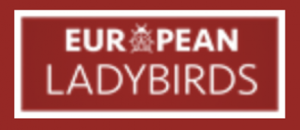
The Facebook group Lienky Slovenska (Slovak Ladybirds) was founded by a Slovak scientist Sandra Viglášová during her post-graduate study focused on the ecology of ladybirds (the Institute of Forest Ecology, the SAS in Zvolen). In 2015-2017, using citizen science methods and the help of the community of fans, she obtained data on the occurrence of different species of ladybirds in Slovakia, their abundance, and population dynamics. Thanks to the samples sent by community members, she confirmed the occurrence of the fungal ectoparasite Hespesomyces virescens on the harlequin ladybird (Harmonia axyridis) for the first time in Slovakia and published this information with her foreign colleagues in the journal of BioControl (Haelewaters et al. 2017).
Sandra Viglášová also co-created an international application, European Ladybirds (with Jiří Skohrovec and Karolis Kazlaukis, under the supervision of Dr. Helen Roy from the Centre for Ecology and Hydrology, Wallingford, UK), thanks to which the application with the names and characteristics of European Ladybirds is also available in the Slovak language. People can use the application to learn to identify ladybird species they can find in Europe. Furthermore, scientists can use the data obtained by citizens to monitor the population of European species and the spread of non-native ladybird species (such as the harlequin ladybird).
More information at the European Ladybirds project.

A common Czech and Slovak project monitors the wild cat. The project is a cross-border collaboration of the National ZOO in Bojnice, the Institute of Vertebrate Biology of the Czech Academy of Sciences and the organization Hnutí DUHA Olomouc (Friends of the Earth Czech Republic in Olomouc). The scientists were looking for the wild cat using camera traps and „fur traps“—wooden sticks covered with glue at some places and scented with a smell attractive to cats. Cats tend to rub against such an object and leave some fur that scientists can analyzed in the lab. They can verify if the cat is really a wild cat (when identified based on camera traps, wild cats can be confused with domestic cats or crossbreeds of a domestic and wild cat) and map the genetic diversity of the population. If citizens have seen a wild cat in the wild or have found a specimen with the signs of a wild cat hit by a car on the road, they can contribute to the project and report their sighting through a web form: www.kockadivoka.cz/o-projektu/chci-pomoct/ or write an email to this address: stopy@selmy.cz
For more information, go to https://www.kockadivoka.cz/
![]()
Video: Let`s Start with Citizen Science (Drought Monitoring)
The Drought Monitoring project (Mgr. Katarína Mikulová, PhD, the Slovak Hydrometeorological Institute), with the help of the networks of volunteers from the field of agriculture and forestry, monitors drought (soil water deficiency) in Slovakia.
“The SHMI has been monitoring drought since 2017. The aim is to monitor the indicators signalling the beginning of water scarcity in Slovakia. Drought monitoring is classified into several types: hydrological drought monitoring, meteorological drought monitoring and agricultural (soil) drought monitoring. In 2017-2019, the SHMI was part of an international project DriDanube – Drought Risk in the Danube Region. One of its aims was to build a network of volunteers reporting the drought impacts. The volunteers shall report to us weekly in a questionnaire the drought status and its effects on vegetation (crops, grapevines, fruit trees, forestry) in their cadastral area.“
More information at the website of SHMÚ and Intersucho (FAQ).



The Citizen Science in the Carpathians project is led by Zuzana Okániková from the PRONATUR Civic Association and Matyaš Adam from the Tomáš Baťa University in Zlín. The project is focused on the dissemination of information on innovative tools for the involvement of local communities in nature protection and conservation, as well as on the networking of the subjects using citizen science methods in their activities. Citizen science can help nature conservation managers improve the quality of informed decision-making and collaboration with local groups to protect the local natural heritage. Information and educational activities of the project shall culminate with a joint event, Bioblitz, in May that showcase citizen science in practice.
“The Citizen Science in the Carpathians project is carried out in collaboration with partners from the Czech Republic, Hungary, Poland, and Slovakia and is supported by the Visegrad Fund.”
More information at OZ Pronatur and Citizen Science in the Carpathians.
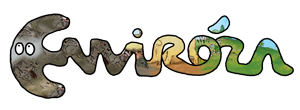
Video: Let`s Start with Citizen Science (Enviróza)
The Enviróza School program (Veronika Páričková), the Slovak Environment Agency: a project involving pupils helps to locate environmental burdens.
Enviróza is a school program in the form of an outdoor game developed to obtain and spread information on environmental burdens in Slovakia. In the game, the participants look for and identify environmental burdens, publish their data online and collect points, i.e., score. Only a teacher (or an after-school activity leader) working at the school can register a school in the Enviróza school game and establish the game group.
“The project was developed to obtain information on environmental burdens. The aim was to go to beautiful and interesting places and, at the same time, look for treasures. But in Enviróza, the treasures looked for are environmental burdens. The program has three main steps. Pupils received some points when they fulfilled the steps; it was a scoring competition.
More information at Enviróza.

Visitor (Mgr. Ladislav Pekárik, PhD.) is a project of the Plant Science and Biodiversity Centre of the Slovak Academy of Sciences. The project maps the spread of non-native species in Slovakia and has recently published a second version of the Visitor application that enables citizens to document the occurrence of such species.
The Visitor project: a citizen science project called “Citizen science” as a tool to raise awareness on on-native species.
The centre was inspired to launch the application by modern technologies and participation in the COST Project (Increasing understanding of alien species through citizen science). The Plant Science and Biodiversity Centre is a partner in this project. Smartphone apps are a good example of good practice in citizen science. The data are collected quickly and easily. The system developed by scientists from the centre consists of several independent projects. The development was influenced by current funding from projects and subsidies.
Volunteers for the project were recruited via media and social networks; university students were involved. Regarding the project’s sustainability, some volunteers still actively collaborate, but some only participate for a short time.
The monitoring outputs are available on the website of the project. The scientists would like to continue the project and focus on selected groups of organisms. They want to enable entering any non-native species but only to proven users (experts). The most frequent problem during the project realization was the lack of funding.
More information at Visitor.
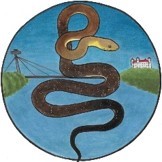
Video: Let`s Start with Citizen Science (The Occurrence of Aesculapian Snake in Bratislava)
The Occurrence of Aesculapian Snake in Bratislava project (Mgr. Petr Papežík): the Department of Zoology at the Comenius University Faculty of Natural Sciences. The project obtains data on Slovakia’s biggest and most endangered snake species via a Facebook group.
The Department of Zoology at the Faculty of Natural Sciences, Comenius University in Bratislava, has created several projects that use citizen science methods, i.e., they involve the public in scientific research. The most known one is the Occurrence of Aesculapian Snake in Bratislava project, which uses a social network website to involve the general public in herpetology research.
More information at The Occurrence of Aesculapian Snake and Facebook of the zoologists of Comenius University.
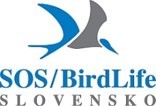
Video: Let`s Start with Citizen Science (Winter Waterbird Census)
The Winter Waterbird Census project (RNDr. Michal Baláž, PhD.): the Slovak Ornithological Society/BirdLife Slovakia. The project uses an extensive network of volunteers to establish the number and species composition of waterbird populations in Slovakia in winter.
Ornithology has traditionally been a strong discipline for citizen science. Birdwatching is an appealing activity, attracting people’s attention for a long time – a large group of amateur bird lovers willing to engage in practical scientific and conservation activities. They realize it is necessary to know the life of birds to set effective measures and conditions for the protection of rare species. Doctor Michal Baláž from the Slovak Ornithological Society/BirdLife Slovakia is a coordinator of the winter waterbird census in Slovakia.
More information at Winter census.

The scientists from the Slovak University of Agriculture in Nitra and Slovak University of Technology in Bratislava, conservationists from the State Nature Conservancy, local volunteers from the Green Legacy association (Zöld örökség), and water management experts from the Slovak Water Management Enterprise joined forces in a project to save the wetland area of Klátovské rameno–a vanishing tributary of Malý Dunaj (the Small Danube) on Žitný ostrov (Zitny Island). The project is funded by the Ministry of Environment of the SR and ACC04 ClimaLocal supported by the Norwegian financial mechanism (Norway Grants). Its aim is to restore the water circulation in the arm and revitalise biotopes for rare plant and animal species typical for native floodplain forests.
The area of Klatovské rameno is located in the middle of agriculture land, in which large housing development is also being built, and there is less and less space for wildlife. This area presents a great opportunity to use the elements of citizen science and behaviour change to engage children as well as all local citizens actively, to help them know the area they live in and that surrounds them. This can help us to obtain interesting inputs necessary for the projects, but we also firmly believe we can teach citizens and especially children to behave in a more”humane” and responsible way to wildlife, water environment and organism living in it, and to gradually vanishing floodplain forests. With this aim in mind, we designed web applications to collect data by citizens and children. We would like to continue with other interesting tasks propose in cooperation with the specialised secondary schools, universities and the State Nature Conservancy of the SR.
More information at Príbeh mokradí (Story of Wetlands) and Zlepšenie stavu mokrade NPR Klátovské rameno (Status Improvement of Wetlands of NNR Klátovské rameno).

Video: Let`s Start with Citizen Science (Stromosvet)
The Civic Association Stromosvet (Ing. Alena Vaľková) has become a Slovak partner of the City Nature Challenge project. In 2021, it realised the first year of the challenge in Bratislava to discover wildlife in the city (the app iNaturalist).
“Citizen Science means engaging citizens in collecting data for scientists. In the City Nature Challenge project, city residents document and share their observations of wildlife, plants, animals, or other organisms, thus creating data for biodiversity research.”
“I am aware of some citizen science projects in Slovakia, but when compared with, e.g., the Czech Republic, there are not many yet.”
More information at: Stromosvet, iNaturalist, City Nature Challenge (SK), City Nature Challenge.
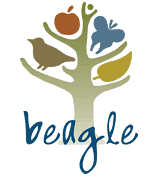
Video: Let`s Start with Citizen Science (Beagle) and (Beagle 2)
The Beagle project(RNDr. Jana Šimonovičová, PhD.): the Slovak Environment Agency. Beagle is a project focused on documenting phenophases of certain trees by primary school pupils and overlapping to the climate change issues.
Beagle–an online project for biological diversity available to all schools in Europe, launched on 15th February 2010. Participants choose one or more trees that they monitor throughout the whole year. They enter the records about the tree phenophases along with documentation on the Beagle project website. They later compare their results with other schools and find out how the results in different European countries differ.
“For the project to work, it is necessary to have a good team: colleagues who are also graphic designers and IT specialists. We have a colleague who helps us. When you have a more complex project, it is vital to have a variety of people who can help you. Having a good team proved good for us; generally, it is simpler. It is essential to communicate with people, reach out to them, answer them, gradually to think of some new things so that the project does not stagnate.”
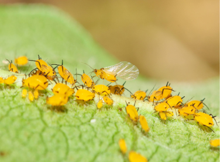
Video: Let`s Start with Citizen Science (The new northernmost occurrence of Aphis nerii)
The occurrence of Aphis nerii (Mgr. Adrián Purkart, PhD.), the Department of Zoology at the Comenius University Faculty of Natural Sciences, Comenius University. The author proved the northernmost occurrence of Aphis nerii using citizen science methods in cooperation with grower-producers.
Citizen science methods work well in large, widely publicized projects with their own mobile apps, but they can also effectively help in smaller projects as is shown by the research of Doctor Adrián Purkart.
More information at: Citizen science reveals the current distribution of the new plant pest Aphis nerii in Slovakia

Video: Let`s Start with Citizen Science (Current Images of Socialism)
The Current Images of Socialism project (Mgr. Soňa Lutherová, PhD.): Institute of Ethnology and Social Anthropology of the Slovak Academy of Sciences. Qualitative basic research includes interviews with people about their current understanding and idea of the period of communist party rule. In addition, part of the project supports examining family history. Pupils and students choose from the photo album a photograph from socialism, discuss it with their relatives, and learn their story.
“It is an anthropological and ethnologic project focused on researching current images/ideas, i.e., memories, ideas, and opinions about socialism. At the same time, it is rescue research because, unlike other countries in our area, especially the Czech Republic and Poland, we do not have so well-documented memory narrations or biographic interviews related to socialism. But, in our research, we also examine how people perceive socialism today, that is, the view is not only into the past but also contemporary.”
More information at: Obrazy socializmu.
